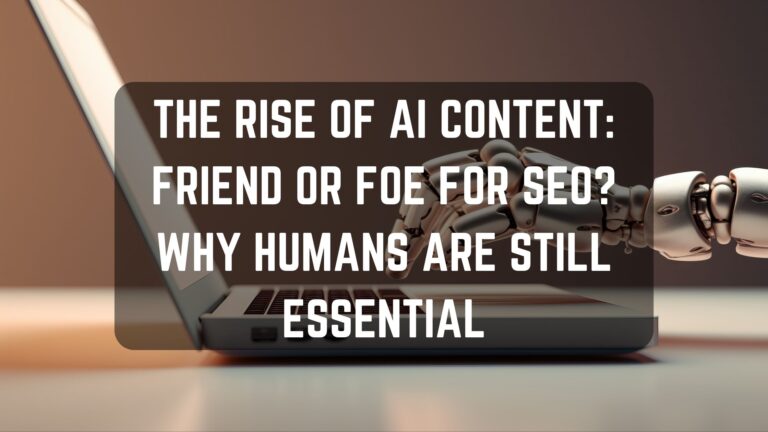FOLLOW US ON:

As the digital landscape evolves, B2B SEO continues to be a vital component of any successful marketing strategy. Staying ahead of trends and adopting the latest strategies can give businesses a competitive edge in search rankings and lead generation. Here are the top B2B SEO strategies to focus on in 2025:
1. Prioritize User Intent in Keyword Research
Understanding the intent behind search queries is more critical than ever. For B2B SEO in 2025, focus on identifying and targeting:
- Informational Keywords: Queries that indicate users are seeking knowledge or answers (e.g., “how to optimize B2B sales”).
- Transactional Keywords: Terms that suggest users are ready to take action (e.g., “best CRM for small businesses”).
- Navigational Keywords: Keywords used to find specific brands or products (e.g., “[brand name] login”).
Leverage tools like SEMrush, Ahrefs, and Google’s Keyword Planner to uncover high-value keywords that align with user intent.
2. Optimize for Voice Search
With the growing adoption of smart speakers and voice assistants, voice search is becoming a crucial consideration for B2B SEO. To optimize for voice search:
- Use natural language and long-tail keywords.
- Focus on question-based content (e.g., “What is the best project management software?”).
- Optimize for local search if your business serves specific regions.
3. Create High-Value, Long-Form Content
B2B buyers are often looking for detailed, actionable insights. Invest in creating:
- Whitepapers and Ebooks: In-depth guides that showcase your expertise.
- Case Studies: Real-world examples of how your products or services deliver results.
- Industry Reports: Data-driven content that establishes your business as a thought leader.
Long-form content tends to rank higher on search engines and attracts backlinks, boosting your site’s authority.
4. Focus on E-A-T (Expertise, Authoritativeness, Trustworthiness)
Search engines like Google emphasize content that demonstrates E-A-T. To improve your site’s E-A-T:
- Highlight author credentials and expertise on content pages.
- Secure backlinks from reputable industry websites.
- Maintain up-to-date, accurate, and well-researched content.
5. Invest in Video SEO
Video continues to dominate online content consumption. Optimize videos for search by:
- Including relevant keywords in titles, descriptions, and tags.
- Adding transcripts for accessibility and SEO benefits.
- Embedding videos on high-traffic landing pages to increase engagement.
Platforms like YouTube and LinkedIn are excellent for B2B video content distribution.
6. Leverage AI and Automation
Artificial intelligence is reshaping SEO. Use AI tools to:
- Automate keyword research and content optimization.
- Generate insights from analytics data to refine your strategies.
- Create personalized content recommendations for different audience segments.
Additionally, consider exploring prompt engineering, a technique that enhances the effectiveness of AI models like chatbots and content generators. Learn more in this blog about prompt engineering. Artificial intelligence is reshaping SEO. Use AI tools to:
- Automate keyword research and content optimization.
- Generate insights from analytics data to refine your strategies.
- Create personalized content recommendations for different audience segments.
7. Optimize for Core Web Vitals
Core Web Vitals (CWVs) are a set of metrics related to user experience, including page load time, interactivity, and visual stability. To improve CWVs:
- Compress images and enable browser caching.
- Use a content delivery network (CDN).
- Minimize JavaScript and CSS to speed up loading times.
8. Strengthen Your Mobile SEO
With mobile devices accounting for a significant portion of web traffic, your site must be mobile-friendly. Ensure:
- Responsive design for seamless navigation on all devices.
- Quick loading times for mobile pages.
- Clickable elements are spaced appropriately for touch screens.
9. Build Topic Clusters
Topic clusters organize your content around core themes, improving both user experience and search engine rankings. To implement topic clusters:
- Create a pillar page for a broad topic (e.g., “B2B marketing strategies”).
- Link it to cluster pages that dive into specific subtopics (e.g., “Email marketing for B2B” or “B2B social media strategies”).
10. Strengthen Your Backlink Profile
Backlinks remain a critical ranking factor. For 2025, focus on:
- Earning links from high-authority domains in your industry.
- Creating shareable assets like infographics, reports, and tools.
- Building relationships with industry influencers and bloggers.
11. Utilize Data-Driven Personalization
B2B buyers expect tailored experiences. Use data from tools like HubSpot, Salesforce, or Marketo to:
- Personalize content and recommendations.
- Segment audiences based on behavior, industry, or pain points.
- Deliver the right message at the right stage of the buyer’s journey.
12. Incorporate Schema Markup
Schema markup helps search engines understand your content better. For B2B websites, use schema to:
- Highlight product details, reviews, and ratings.
- Add FAQ schema to capture rich snippets in search results.
- Implement breadcrumb schema for better navigation.
13. Monitor and Adapt to Algorithm Changes
Search engine algorithms are constantly evolving. Stay informed by:
- Following SEO news from trusted sources like Moz, Search Engine Journal, and Google’s blog.
- Regularly testing and updating your strategies based on performance.
Final Thoughts
B2B SEO in 2025 will require a combination of technical expertise, high-quality content, and strategic adaptability. By implementing these strategies, your business can stay ahead of the competition, attract qualified leads, and achieve sustainable growth.
Discover the 4 Timeless Strategies of Digital Marketing that always deliver results! Read more here: What Works Best in Digital Marketing







